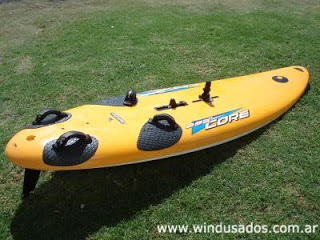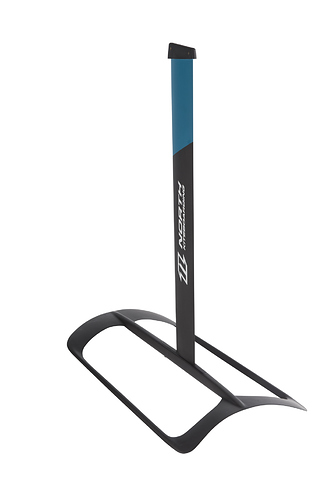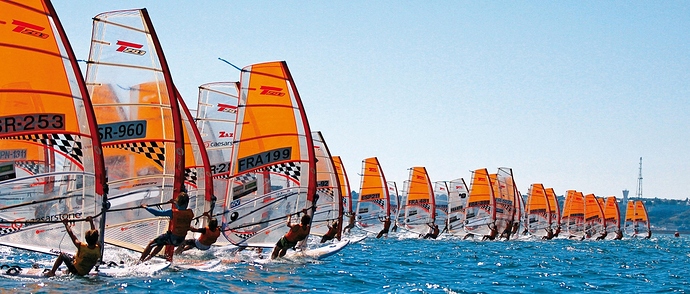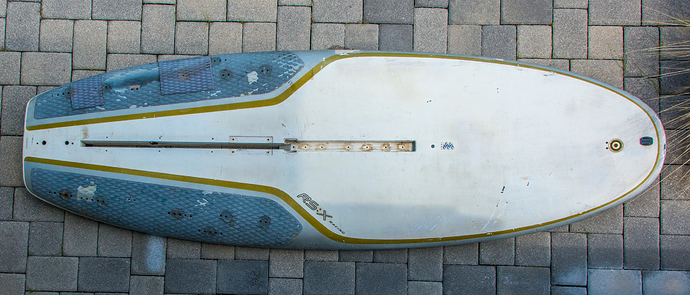I am more worried about the sharp edges on the foil and the mast vs my legs. I will wear a wetsuit, helmet, impact vest gloves and shoes.
I definitely worry about the hydro foil wings for injury as they really hurt and are sharp. North has that really sexy looking foil with round rails connecting the wings… Brilliant design for safety… I would trade safe and fun with less efficiency any day, which is how I am designing and building my efoil.
My second concern with an efoil is the electronics, shorting, heat, battery fires.
I’m all about the direct jet drive as its less money to build, durable, very low profile as you don’t have to worry about a big prop/duct touching the surface as easily, and you cant access the blade/impeller with fingers that would chum in the big fish  lol.
lol.
Hi all !
Any new datas from people who succeeded in getting up on the foil regarding Thrust, Starting power and foiling power needed ?
From what I’ve seen, some succeeded in getting on the foil with 1800W (Peters build) and then cruising with only 400-500W. Anybody else experienced such low consumption ?
It depends a lot on the Foil Wing and effectivity of the prop, but a good value ist 1100W cruising 25km/h and 1600-2000W for T/O
Thanks for your data. According to your figures (flight power consumption / take-off power consumption) = 55 to 69 %.
Previously I had read that this ratio was 60%. To increase the battery life, it would be interesting to know what makes the 15% difference … wind direction, chop over the water surface, propeller total surface, pitch ratio…?? Battery voltage going down along the session ?
That is impressive !
@Peter explains the “secret” of his setup a bit later: He seems to be using a “tandem” configuration (Please Peter correct me if I’m wrong). As both wings provide positive lift, the centre of lift of the plane is moved 20cm more aft compared to a traditional setup. The rear wing provides lift (plus balance with far less drag) that sums up to the front wing surface to allow early take-off with a “small” 600cm2 front wing.
On the right picture we can clearly see that the rider’s CG (his belly button to simplify) is nearly above the mast that is totally unconventional, sign of a rear wing providing positive lift which in turn forces the plane Neutral Point to move backwards…
HUGE CON: pitch unstable reaching 25 knots - experienced by the GONG Hellvator kitefoil in 2016, reason the tandem setup was abandoned in 2017 although loved by beginners for the added stability below 20 knots.
So, not to go on the extreme side like Peter did, it should be fairly easy to take off with 3000W (with margin) and cruise with 1500W.
The key here would be to have a really big wing, like 1200+ cm².
Also, with a 12S battery pacck, this would mean maximum 60A for the motor, something cheap ESC like Vesc 4.xx can handle. I still can’t figure why so many people here go for a 200 or even 300A ESC that costs 300$ on which they add active water cooling.
Question : What about thinking out of the box ? Wouldn’t a 200 liter board dramatically decrease the power needed at take-off, rather than the typical 100l-130l everyone seems to use here ?
Our target is to not need more than 2000w at 12S for take-off. That is a 45 amps requirement.
Son just rescued this 10-year old BIC 293d board from the garbage, 205 liters, 10kg, 294 cm with front left uncut  Should he cut the board front to have 250 cm, most of the volume being at the back and the center, that would make a very cheap and robust 170l, 250 cm, 8 kg board…
Should he cut the board front to have 250 cm, most of the volume being at the back and the center, that would make a very cheap and robust 170l, 250 cm, 8 kg board…

If you are interested, this board is used for world races and is quite common so there certainly is one for sale in your area. Newer ones seems to be on the heavy side though (13 kg !)
200L is good for a nice standing start for sure, keep in mind wide boards are faster than narrow inch for inch as explained here to get up planing: http://www.surfline.com/blogs/talking-design-the-board-blog-with-rusty-preisendorfer/rusty-explains-why-wide-boards-are-fast-and-narrow-boards-a_40518/
_> It’s a common misconception that wide boards are slow. In most cases, inch for inch, they are actually faster. Shorter, wider boards, once planning, are far more efficient and ultimately capable of achieving higher speeds than longer, sleeker looking foils.
n_ce up and planing, wetted surface becomes a big variable influencing the speed of a board. The more board that is in contact with the water, proportionately more drag is incurred. The entire surface area of a board isn’t so much an issue as the rail length and tail width. Narrow shapes, especially with narrow ends, cause drag and suction, and are inherently unstable and interfere with complete planing process. So a wider board, even though it may have relatively more area, allows the rider to go shorter. Usually one rail is committed at a time. A shorter rail line will have less drag, less wetted area, and accelerate more quickly._
That is the path followed by formula windsurfing and kite formula in a race practice. In a short future, new practices like slalom will emerge and large surfaces should not be an advantage.
I think the optimum volume and shape for a eFoil is probably the one of jetsurfs: http://www.jetsurf.com/
Their webpage introductory movie is just … breathtaking …
I will be testing a 220 liter sailboard, initially uncut. It’s the model used in the Olympics. Long (286 cm) and very wide (93 cm). Found it on craigslist for $45.
[Wikipedia] The current Olympic class, the Neil Pryde RS:X was used for the first time in the 2008 Summer Olympics and 2012 Summer Olympics. However, in May 2012 the International Sailing Federation voted windsurfing out of the list of the Olympic sailing disciplines for the 2016 Games in favour of kitesurfing.
45 bucks !!! Lucky you ! That very board is 10 to 20 times more expensive second-hand in the South of France. I guess your previous owner made more money selling the footstraps, the mast foot rail and the fin…
Lol maybe. Actually it did come with semi-rotted footstraps which I took off. But the daggerboard, rigging and sail were gone.


